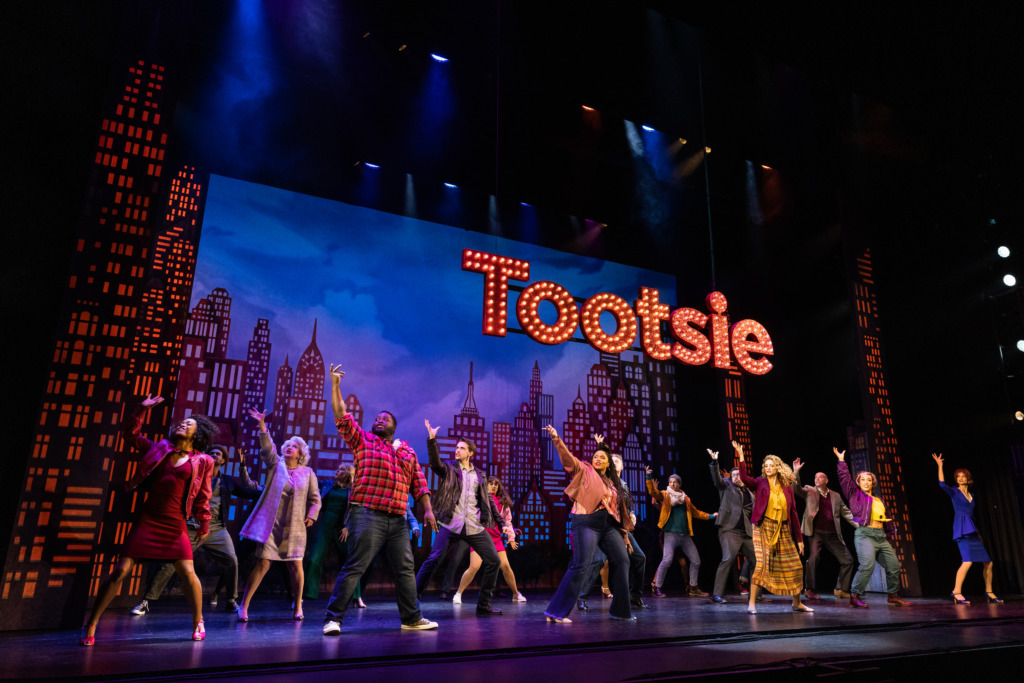Look out world! This show’s on a roll! It’s unstoppable! Tootsie the musical is crashing its way into Baltimore’s Hippodrome Theatre in the France-Merrick Performing Arts Center this holiday season, just in time to give everyone a little something different this December. Based on the 80’s film of the same name (from Columbia Pictures, staring Dustin Hoffman), this Tootsie is something strange and something new; it’s a fast-paced, high-octane story of the real-life struggles of actors, particularly women in New York City. Directed by Dave Solomon (following the original Broadway direction of Scott Ellis) and Choreography by Denis Jones, this enigmatic and perplexing musical is filled with brilliant moments that encompass a plethora of things, leaving the audience with lots to think about, plenty to enjoy, and much to mull over at the evening’s end.
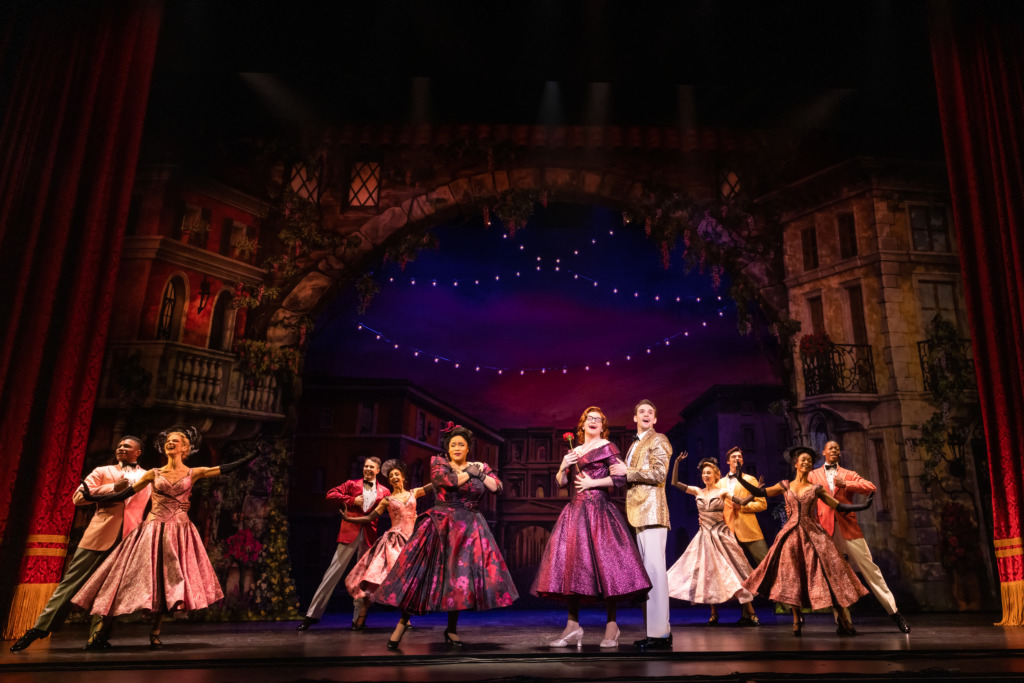
The production takes a flying leap out of the Dustin Hoffman days of the 80’s and straight into the present day, still in New York City. And while much of the movie’s original concepts, character names, and even broad-strokes of plot are kept intact, a great deal more is morphed, molded and situated around the volatile, ephemeral nature that is live theatre. The most difficult thing about the production is not the level of talent pouring off the stage; there is plenty of that, no doubt. It’s just the general nature of the show. While the written version is more accepting of all types, it’s particularly hard to ingest many of the little nuanced moments in the show as they’re just so ‘cringy’ (and they’re written to be that way. Like the blatant misogynistic sexism of the Ron Carlisle character, and all the things that are dead wrong about a man dressing in drag, taking a woman’s part and with no other motive than “I did it for the girl.”) It becomes a war of emotions for the audience because the Michael Dorsey character is so wrong on so many levels and yet the Dorothy Michaels character is someone you want to believe in, support, and have ultimately succeed, until you remember that they are one in the same person. Despite all of these challenging moments, which serves theatre’s ultimate purpose (comfort the discomforted and discomfort the comfortable) and ultimately make the production valuable, the show is severely entertaining and brings lots of laughs and pulse-thumping moments of joy and discovery to everyone in attendance.
Touring Scenic Designer Christine Peters, adapting designs from the original Broadway scenic design of David Rockwell, gives some nods to the ‘80’s originating tale’ with an assist from Lighting Designer Donald Holder. There are some poppy pastels in the New York City skyline buildings, echoed and reflected in some of the lighting choices featured in the larger dance numbers. The set is rather impressive, particularly in its “Transformers: Building-Exterior-to-Apartment-Interior” magic tricks. And the scrims that fly in and out to shift from Central Park to the varying scenes of the “play within the play” are magnificent in a subdued, watercolors sense.
“Jazz-hands-jazz-hands-Fosse-Fosse-Fosse!” might sound familiar to anyone who’s ever danced for a Broadway show, or even any musical production anywhere. And Broadway choreographer Denis Jones has brought all of that with great exaggeration into the dance routines of this show. (The curtain-call finale ultimo style dance-out calls back to this in a hysterical fashion, which is a great uplifting moment as the production itself ends on an ambiguously ‘down’ note of uncertainty and questionable choices.) Jones’ choreography, particularly in the numbers inside the rehearsal hall for various Ron Carlisle productions, are extreme, loaded with these over-the-top, Fosse-inspired/stylized movements. There’s even a routine that features the Ron Carlisle character overdoing the motions (as any good Director/Choreographer does in rehearsal) that gets the audience rolling with laughter. Jones’ choreography goes hand-in-hand with touring Director Dave Solomon’s smooth blocking and transitional movements. Often times as scenes change, the ensemble twirl about the stage, flinging furniture along with them as they move, and it flows flawlessly from one scene into the next in this beautiful hybrid of dance and motion, not quite choreography, not quite blocking. There’s nothing but roaring, soaring energy bouncing (and ‘selfie-ing, and ‘Fosse-ing’) out of this dancing ensemble; this really drives the overall energy and pacing of the production.
The show, as it treads cautiously on a lot of hot-button issues, finds a way of cultivating these impressive moments of both humor and truth. Director Dave Solomon homes in on moments where the raw comedy will erase any feelings of awkwardness created by the situation at hand. This is particularly true whenever roommate Jeff is involved in a ‘discovery’ scene. When Jeff lays it out (it becomes obvious pretty early on that Michael Dorsey becomes Dorothy Michaels so this isn’t a spoiler, per say) to Michael/Dorothy that what he’s doing is wrong— and not because he or the world disproves of men dressing like women (there’s even a powerful quote along the lines of “…live your best life, gay, straight, non-binary, transgender, whatever…but do it honestly!”, which earns an ovation from the audience)— it’s handled in such a powerful and yet delicate matter that you feel the intention of acceptance behind the production. There are other such moments all throughout the performance, like when Dorothy tells Ron Carlisle off in the iconic “my name is Dorothy— NOT Tootsie” scene, each one building on the last to build a sense of truth and satisfaction to the performance.
The show itself does a superb job of capturing the essence of struggles of actors in New York City (particularly during the frenetic number “Most Important Night of My Life”, which really allows the ensemble and all of their unique and quirky characters to shine.) It has everything from the punchy and plucky producer—Rita Marshall (Kathy Halenda)— to the ball-busting, fury-driven and mouthy agent— Stan Fields (Steve Brustien). Halenda and Brustien, respectively, bring vivacious life to their characters. Halenda even gets to showcase her proud vocal chops during “I Like What She’s Doing”, and while Brustien’s character is never caught belting out a solo verse or segment of a song, his mannerisms and overall delivery of the gritty, agent is divine.
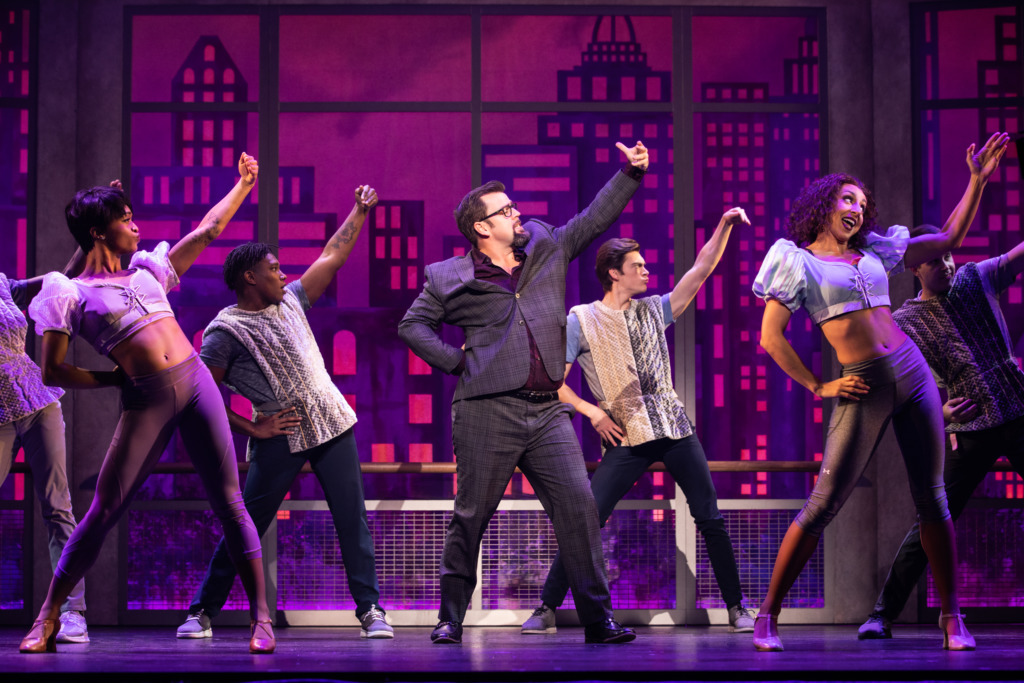
It’s difficult to pin the label of ‘villain’ or even ‘antagonist’ on any one character in this production, but the sleazy, grody, sexist, misogynistic wretch that is Ron Carlisle might come close to one or the other or both. Played by the very talented Adam Du Plessis, every person in the audience is shuddering and cringing at the Ron Carlisle character right from the get-go. (Though the production did the overall character construction extremely well by balancing him with a quirky humor that revolves solely around his choreography and dancing capabilities, else you’d have a static, rotten plot device wearing a human suit in place of a character that Adam Du Plessis can actually work with.) Du Plessis finds a tempered balance in his sleazy come-ons, his sexist comments, and his overall inappropriate, outrageous and entitled behavior. It brings the sullied feeling that many of us know all too well that is associated with theatre culture and ‘directing standards’ to the forefront without overpowering and subsequently ruining everything else that’s happening on the stage. And as mentioned, Du Plessis is a stellar dancer, particularly when he hijacks the in-rehearsal dance routine to show the ensemble dancers what he expects to see from them.
Sometimes there are no words for the true comic classiness of a character and a performer and this is the case for Lukas James Miller in the role of Max Van Horn. To say that the Max Van Horn character is the epitome of ‘Looks 10 Brains 0’ would be a kindness to the character. In tragic-but-true Broadway fashion, the Max Van Horn character is brought along to the upcoming production of “Juliet’s Nurse/Curse” because he’s eye-candy and a reality TV show star. Lukas James Miller really works magic in this character (it is no small feat to play ‘simple’ as well and as over-the-top as he does) and he really gives the audiences the giggles, particularly when it comes to some of the random things his character says. Miller also has quite the voice when it comes to belting out his bits during various solo moments in the production.
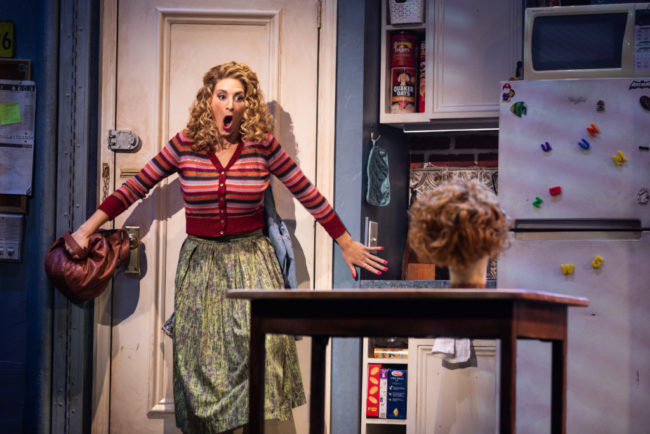
Leaving no air on the stage for anyone else to breath because of her spastic, patter-ranting all through “What’s Gonna Happen” (and it’s recuring iterations), the character of Sandy Lester (Payton Reilly) is a whirling dervish that had one too many triple-shot lattes before blowing into the scene. Reilly could rival a young Kristin Chenoweth in both vocal talent, quirky vocals, and jubilant energy. The precise articulation that Reilly executes during those vastly complex pattern numbers assigned to her character is impressive, making the number hysterically humorous. There times where some of her comic antics drag on a bit too long (though this is most likely a directorial choice, hoping to really punch the audience again and again in the gut for laughs), but otherwise her comedic delivery, particularly when it comes to her vocal meltdowns is uproarious.
The comic foil to all the things in the show and simultaneously the voice of reality and reason, or at the very least, reasonable reality, comes in the form of ‘roommate’ Jeff Slater (Jared David Michael Grant.) There is something to be said for Grant’s uncanny ability to speak volumes without ever actually saying a word. There are a great many scenes where Grant’s character just casts a look or a gesture or a long, pregnant pause over the scene and the audience implodes with laughter. His big number, rather mildly named “Jeff Sums It Up” (because calling the song by it’s expletive, repeating chorus might be a step too far), is hands down one of the most comically hilarious moments in the performance. His dance moves— complete with crab-shuffle-scuttle and jazz-hands-to-swing walk all around the apartment scene in this number— are hysterical. There’s a billion ounces of comic nuance and seriously sage advice all rolled into one performance at the skilled hands of Jared David Michael Grant when it comes to the Jeff character in Tootsie.
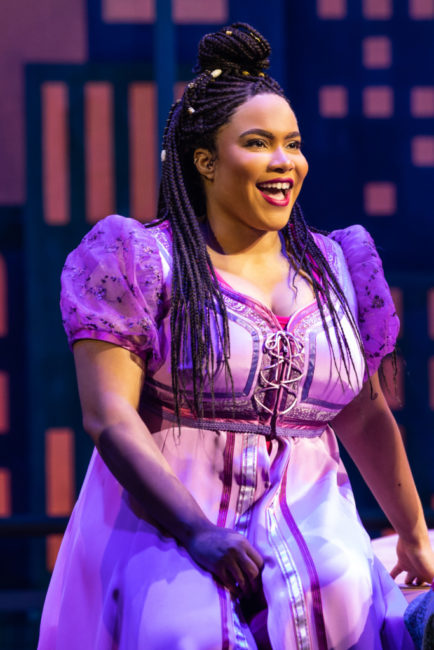
There’s always ‘the other woman’ and in this case, the ‘other woman’ of equal footing and truly the victim in all of this chicanery, is the character of Julie Nichols (Ashley Alexandra.) With a phenomenal voice that has a vastly surprising range, covering everything from the moody low notes to those fiercely high-belted soul notes, Ashley Alexandra gives a 100% earnest portrayal in this role, making the Julie Nichols character someone the audience is ready and willing to sympathize with, feel for, and cheer for all throughout the performance. Alexandra is sensitive and yet soulful, serious and yet humorous, there is a perfect juxtaposition of her real feelings verses the crap she has to contend with just to keep getting work. This is an all-too relatable struggle for women (and not just women but any marginalized minority) in the industry. She puts the sinful heat of sweet music into “Gone, Gone, Gone”, which is a stunning number featuring a backup trio (Leyla Ali, Delaney Gold, Dominique Kempf.) Between Alexandra’s vocal versatility and emotional vulnerability, she’s the perfect fit for the role, really knocking numbers like “Who Are You?” and “There Was John” clear out of the park.
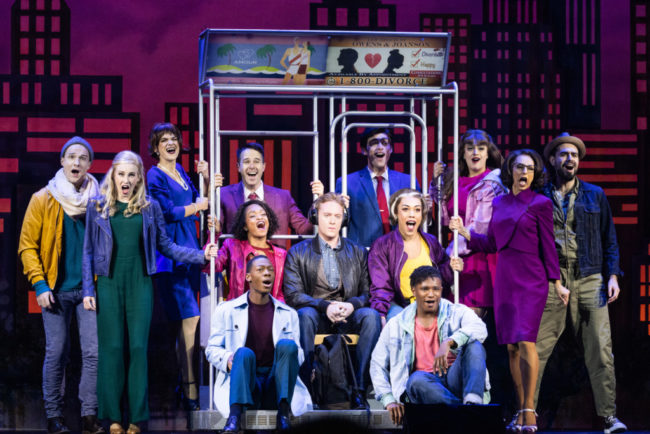
The name is Dorothy. Not TOOTSIE. But Tootsie, Dorothy Michaels or Michael Dorsey, Drew Becker wears it all and wears it brilliantly. The challenging and mercurial role is indeed an ‘Everest’ of theatrical performances and Becker scales the mountain with practiced ease. There’s the narcissistic, bombastic Michael who never believes that he’s the cause of his own problems, driven by fear of failure and determination not to end up with shattered dreams, but that’s just one half of the role. Then there’s Dorothy Michaels: enigmatic, compassionate, and full of a determination that comes from a challenging truth. All rolled into one performance, featuring stellar singing, delightful dancing, and a whole bunch of amazing acting all coming out of Drew Becker. But the audience struggle, when regarding, experiencing and ingesting this character, is real. For as brilliant as Becker’s performance is (in both roles) you get so sucked into the empowering voice that he gives women as Dorothy, until you remember he’s just a cis-gendered, heterosexual man, stealing a role from a woman, because as a man he can’t his own work because he’s too temperamental to work with. It’s a double-gut-punch because you feel all the feels, as the kids say, when it comes to these moments of triumph for Dorothy, right up until you remember that Dorothy and Michael are one in the same. Becker has a sensational voice, with a glistening tenor range perfect for transitioning into those more falsetto sounds expected of the Dorothy character. And the comic delivery, particularly when in ‘Dorothy-mode’ is spot on. “I Won’t Let You Down” is Dorothy’s 11 o’clock number (appearing at roughly half-eight in the show-clock-scheme of things) while “Talk to Me Dorothy” is this harrowing and humbling moment of truth for Michael late in the second act. Drew Becker deserves all of the standing ovations he receives (and it’s a smart choice in line with the hopes of the character learning a lesson to not take the curtain call as Dorothy but rather as Michael Dorsey.)
You’ll be right at the heart of it, right in the mix of it, and while it may be challenging, you’ll embrace every minute of Tootsie. But don’t leave off getting tickets until the last minute, the show is only in town through Sunday December 5, 2021! ss
Running Time: 2 hours and 35 minutes with one intermission
Tootsie plays through December 5, 2021 at Baltimore’s Hippodrome Theatre in the France-Merrick Performing Arts Center— 12 N. Eutaw Street in the Bromo Seltzer Arts District of Baltimore, MD. For tickets call the box office at (410) 752-7444 or purchase them purchase them online.

